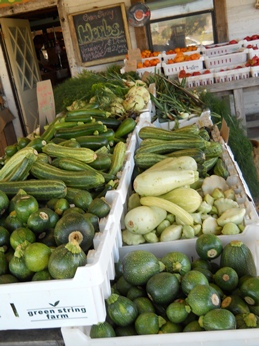Lesson Plan: Get Creative with Potatoes
Saturday, 01 October 2011 19:02
 An e-learning module focusing on Americans’ favorite vegetable.
An e-learning module focusing on Americans’ favorite vegetable.
Courtesy of CIAprochef.com
As the demand for lighter, healthier menu options and bold global flavors continues to grow, more and more chefs are turning to the potato as the perfect canvas for menu innovation. Why? Because potatoes are a familiar, versatile vegetable that can stand up to today's big flavors and eye-catching presentations. They're available in all kinds of exciting new varieties. And they have a remarkable nutrition story to tell. Diners love potatoes, and they demand health, variety and novelty. Now, they can have it all.
Through The Culinary Institute of America’s ProChef e-learning, “Get Creative with Potatoes” presented by the U.S. Potato Board discusses today’s potatoes—and how, now more than ever, they can put chefs at the forefront of menu trends. The module includes menu ideas and recipes, innovative techniques from chefs, instructional videos, potato varieties and nutrition and more.
To access the e-learning module, visit www.ciaprochef.com/potatoes.

 As educators of future culinarians, we have a unique opportunity to help mold the future of the American diet.
As educators of future culinarians, we have a unique opportunity to help mold the future of the American diet. The American Culinary Federation’s 2011 Chef Educator of the Year says success and failure through solo and team competitions helps prepare students for the real-life rigors of the workplace.
The American Culinary Federation’s 2011 Chef Educator of the Year says success and failure through solo and team competitions helps prepare students for the real-life rigors of the workplace. Big shifts in U.S. foodways emerging at this year’s conference included “clean” menu descriptions, Korean influences, strategic use of salt and black pepper and “invisibly healthy” indulgence.
Big shifts in U.S. foodways emerging at this year’s conference included “clean” menu descriptions, Korean influences, strategic use of salt and black pepper and “invisibly healthy” indulgence.